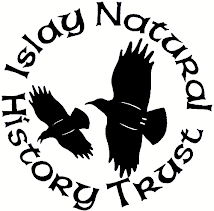Wednesday, 1 December 2010
Argyll and Bute Local Biodiversity Action Plan 2010- 2015 launched
A new blueprint for maintaining and improving biodiversity in Argyll and Bute was launched on November 30th.
The revised Argyll and Bute Local Biodiversity Action Plan (LBAP), overseen by the Argyll and Bute Local Biodiversity Partnership, takes over from the previous plan which was launched in 2001.
This latest phase of the local biodiversity process has attracted interest from organisations from across the UK who want to deliver projects in an area well known for its wealth of biodiversity.
And it will enable lead partners - including government and non-government agencies and community groups - to continue to work together to deliver biodiversity benefits throughout Argyll and Bute.
Among the significant achievements of the previous LBAP were influencing agricultural environment schemes, river basin and catchment management plans, protected marine and coastal habitats and species plans as well as encouraging people to be more proactive in their community.
The revised plan focuses on threatened habitats and species through adopting the ecosystem approach, which is a nationally accepted policy as a means of ensuring cohesive conservation activities.
There are six work programmes - Freshwater and Wetland, Marine and Coastal, Lowland and Farmland, Woodland, Upland and the Built Environment. Each contains a number of habitats and associated species of which projects will be developed to ensure their sustainability.
Local Biodiversity Partnership chairman, Councillor Bruce Marshall, said: “I am very proud of the hard work put in by the partners and RPS Consultants. Developing the 2010-2015 plan was not an easy task, and I congratulate all those who contributed to it.
“The newly revised plan has provided an opportunity for more organisations and communities to get involved. We are very proud of the way in which such a wide range of people have so far played a part, and look forward to even more becoming involved in the future. I know that some will be disappointed that their specialist area of interest may not have been included but this is an ever changing process which allows us to address these over time.
“As this is International Year of Biodiversity 2010, it is particularly fitting that we are at this stage. However, for the plan to be successful, it is essential that partners encourage the community to get involved in the work programmes relevant to their area. We are very lucky in Argyll and Bute to have the accolade of having some of the best examples of biodiversity in Britain, so let’s keep it that way.”
Guests at the launch heard a number of presentations, among them one from Lochgilphead High School pupils on their ‘Biodiversity through a Lens’ project.
The revised plan was officially launched by Andrew Campbell, Scottish Natural Heritage’s operations manager for Argyll.
"Our local bird life is so well-known that birdwatching contributes significantly to the local economy of a lot of our islands,” he said. “But our real diversity often lies in unexpected quarters. Argyll is one of the richest places on the planet for mosses, liverworts and lichens, with our west coast woodlands being a particular hotspot of world importance.”
The UK has 15% of all of Europe's flowering plants, but 65% of all of Europe's mosses and liverworts - most of which occur in Argyll and Bute.
Andrew went on: “Argyll and Bute is a very small component of Europe and is home to an equally small and very thinly spread human population, but all of us living here carry an awesome responsibility to look after some iconic species like otters, red squirrels, golden eagles, basking sharks and whales.
“Looking after the ecosystems on land and sea which are home to these and thousands of other species is a challenge to all of us and the biodiversity partnership represents a broad coalition of individuals and groups who are a joy to work with and who can be quite inspiring.
“All of us in Argyll and Bute are fortunate to have easy access to such an outstanding environment and the chance to enjoy the diversity of life around us. We all need to commit to the task of sustainably utilising it in our day to day lives.”
The Argyll and Bute Local Biodiversity Partnership was established in 1997, with the first edition of the Argyll and Bute Local Biodiversity Action Plan launched in 2001. The partnership has 30 members.
Argyll and Bute Biodiversity Partnership
Subscribe to:
Post Comments (Atom)

















No comments:
Post a Comment